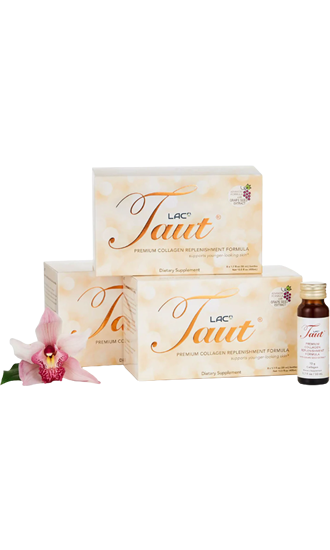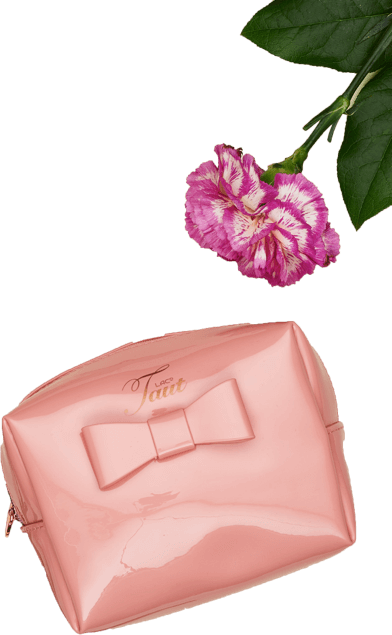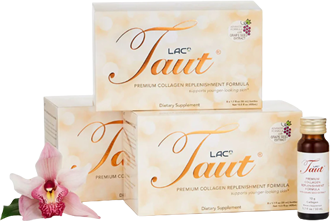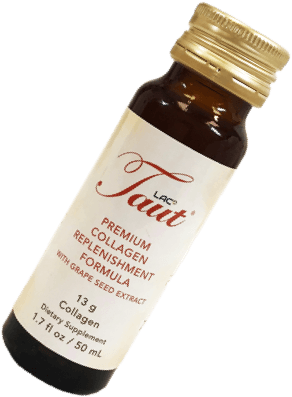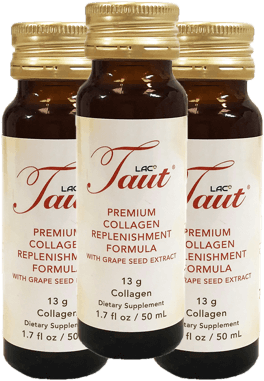Crepey Skin: What Causes Crepe Skin & How to Get Rid of It (+Treatment)

Is your skin looking and feeling thin, wrinkled, and similar to crepe paper? Crepey skin happens for a wealth of reasons but, one thing that is sure, is that it leaves our complexion looking older and lackluster.
Luckily, there are numerous crepey skin treatments that can help you achieve red carpet radiance on the daily.
In this article, we tell you how to treat crepey skin so that you can feel and look your best for years to come.
What Is Crepey Skin?
So, what is crepe skin really? Crepey skin is thin, wrinkled, and often looks similar to crepe paper. Typically, people with crepey skin have more fine lines and wrinkles.
Crepe paper skin can affect all parts of the body but it is most common on the upper arm area, the neck, and the face. The skin on the chest can also feel loose and crepey skin on hands is also very common as we age.
What Causes Crepey Skin?
The most common crepe skin causes is reduced cell turnover, loss of collagen and elastin, and diminished hydration. Without adequate moisture, the skin loses its plumpness, which can lead to crepey skin, resulting in a dry, wrinkled complexion with little volume.
Another common cause of crepey skin is hormonal changes. This is especially true for women due to fluctuations in the hormone estrogen. When estrogen levels are either too low or too high, the skin can become dry, leading to an increase in fine lines and wrinkles, and a loss of moisture.
Other factors that can cause crepey and sagging skin include losing or gaining substantial amounts of weight, lifestyle factors such as drinking alcohol, smoking, and eating a diet high in refined sugar and inflammatory ingredients.

How to Treat Crepey Skin?
Wondering how to get rid of crepey skin?
Worry not! There are ways you can treat crepey skin on legs, arms, and face to improve the appearance of your complexion. Here are some tips on how to fix crepey skin:
Boost Your Collagen Stores
Our skin's elasticity, texture, and overall health is dependent on two important proteins: collagen and elastin.
Unfortunately, as we age, our natural collagen production diminishes, which results in more fine lines, wrinkles, and a loss of volume.
By replenishing our body with new collagen, our skin can maintain its elasticity, returning to its normal position and avoiding any sag. Luckily, you can combat the early signs of aging and reduce the appearance of crepey skin to enjoy a plump and vibrant complexion for years to come thanks to our Advanced Liquid Collagen Formula.
Made from wild-caught Red Snapper from the Indian Ocean, our 8oz drink provides a whopping 13,000mg dose of collagen peptides combined with six other skin-loving ingredients designed to support your dermis.
We've coupled our potent dose of the protein with ceramide and hyaluronic acid to provide the skin with additional moisture as well as elastin peptides to support elasticity, grape seed extract for its antioxidant effects, vitamin C which is a co-factor of collagen, and vitamin B6 for its stress-relieving properties.
Restore your dermis' natural plumpness and say goodbye to crepey skin on arms and face with RenewSkin, Inc.'s liquid collagen drink today.
Remove Dead Skin Cells to Improve Skin Texture
When dead cells lie on the surface of the dermis, they eventually affect our complexion, leaving the skin wrinkled and lackluster. Boosting cell turnover by removing dead skin cells regularly can help prevent and address crepey skin while also supporting overall skin elasticity.
To do this, consider adding a scrub to your daily skin care routine. This will remove dry and dead cells, boosting your overall skin health. Be sure to opt for non-toxic ingredients that will not strip your dermis of its natural lipid barrier otherwise, you may end up with dryer skin than you started with!
Another common and effective skin treatment that can help treat and even prevent crepey skin is dry brushing. Dry brushing the skin rids it of dead cells all while boosting your circulation and stimulating your lymphatic system.
Include Hyaluronic Acid in Your Skin Care Routine
Hyaluronic is a moisture magnet that can carry up to 1000 times its weight in water. Thanks to its ability to retain water, it is one of the best crepey skin treatment options because it plumps the skin, reducing the early signs of aging and improving skin texture.
While using topical hyaluronic acid serum can help support a youthful appearance, we highly recommend supplementing with this powerful ingredient internally. That's why we created our Taut Hydrate supplement.
Made with the highest quality plant-based hyaluronic acid, our formula also includes grape seed extract to help reduce fine lines and wrinkles, all while warding off free radical damage. Plus, because it is taken orally, Taut Hydrate also supports the joints. With Taut Hydrate, you'll enjoy firm and smooth skin as well as a potential increase in mobility. What's not to love, right?
Use Other Over-the-Counter Treatments
Today, there are a number of over-the-counter treatments that can help reduce crepey skin by increasing cell turnover, improving the appearance of your complexion. Some of these include:
- Lactic acid
- Glycolic acid
- Alpha hydroxy acids
- Salicylic acid
- Beta hydroxy acids
The type of over-the-counter solution you use will depend entirely on your skin type, however, we highly recommend that you consult with a board-certified dermatologist to ensure that you are using the best products for your dermis.
Talk to a Board-Certified Dermatologist About Fractional Laser Treatment
One of the most common ways to reduce crepey skin is through the use of fractionated lasers. Also known as Fraxel, this form of laser treatment encourages the growth of collagen by heating small areas under the skin using a laser.
By targeting the skin from the inside out, the laser helps reduce the visibility of fine lines, smoothing out the skin, and in turn, reducing the early signs of aging as well as crepeyness on the face, neck, and body.
Opt for Fillers
Among the multiple treatments available to improve crepey or creepy skin are dermal fillers. But, not all fillers do the trick!
A number of peer reviewed studies have highlighted the various fillers capable of adressing crepey skin, specifically. One of these highlights Radiesse as one of the best fillers available for reducing the appearance, texture, and thickness of the skin.1
Radiesse is injected under skin to stimulate the growth of collagen which, in turn, plumps the skin, having an anti aging effect on your complexion.
Another biostimulatory filling agent that can boost collagen in the skin is Sculptra. Alternatively, injectables with hyaluronic acid may also decrease the visibility of crepeyness in the upper arms specifically. It's important to note that all fillers come with their own set of unique side effects, therefore, working with a board certified dermatologist is essential. That said, overall, this is a relatively non-intrusive option with virtually no recovery time required.

Plastic Surgery
Looking for something more permanent? In this case, you may want to look into plastic surgery.
There are a number of procedures that can help tighten skin across the body depending on your individual needs. From neck lifts to face lifts, your healthcare professional will be able to create a personalized treatment plan tailored to meet your goals.
Plastic surgery is a permanent anti aging procedure that comes with a wealth of risks. It is, therefore, imperative that you weigh up all of the pros and cons before going under the knife.
How to Prevent Crepey Skin?
Today, there are a number of preventive measures you can take to support your skin through the aging process, reducing its effects to maintain that youthful plump face that we all know and love. Here are our top tips for preventing crepey skin:
Protect Your Skin With Antioxidants
If you want to boost your skin health and improve crepey skin, incorporating antioxidants into your beauty routine is essential. Antioxidants work by fighting off free radicals in the body, providing you with incredible anti aging effects that can keep your skin soft and radiant for years to come - No needles or knives involved!
Free radicals, caused by pollutants, sun damage, and poor lifestyle choices, can lead to a wealth of health issues, including the early signs of aging, inflammation, and in extreme cases, skin cancer. Luckily, our Taut Bright Bye-Bye Dark Spots works hard to ward off cellular damage and lighten your skin naturally.
Made with seven powerful antioxidants proven to protect the skin from free radical damage, Taut Bright helps rid the body of toxic waste, reducing age pigments and fading hyperpigmentation and imperfections along the way.
Apply Sunscreen
On the topic of skin cancer, be sure to wear sun protective clothing and use sun protection to safeguard your skin from harmful UV rays and skin damage.
Skin damage from UV rays is one of the most common causes for an aging complexion. While you should spend time in the sun to soak up enough vitamin D, it's important to minimize sun exposure during peak hours and ensure you're wearing sunscreen when spending time outdoors.
If you want to reduce crepey skin and prevent sun damage, our experts recommend avoiding tanning beds entirely.
Stay Hydrated, Both Inside & Out!
Aging isn't the most common cause of crepey skin, it's lack of hydration that most likely to cause those unwanted lines!
Skin hydration starts from within so if you want to maintain a plump, even complexion, you must stay hydrated, both inside and out. You should aim for at least eight glasses of water a day to keep your skin hydrated and maintain a youthful appearance. Plus, optimal hydration will help reduce lactic acid build up in the body.
In addition to drinking plenty of fresh, filtered water, using a good moisturizer can help keep your skin soft and smooth. Choosing the best moisturizer will depend entirely on your skin type so be sure to do some digging before buying the first product you see on the shelf.

Eat a Balanced Diet
Eating a balanced diet, high in vitamins, minerals, healthy proteins, and fats will provide long term protection from external pollutants. Moreover, a clear skin diet can help safeguard your collagen and elastin stores, slowing the aging process.
Also, did you know that some foods can help protect you from sun damage? That's right, the lycopene in tomatoes can help protect the skin from UV-induced reddening. Plus, they're a good source of vitamin C and can protect your body's elastin stores from free radical damage.
Get a Good Night's Sleep
A good night's sleep goes a long way when it comes to the skin. Our experts recommend you get eight hours of beauty sleep every night, going to bed before 10.30pm. And, it's also important that you reduce your screen time before 9pm as this can reduce your sleep hormone, melatonin, all while negatively affecting your skin.
Reduce Stress Where Possible
Stress causes free radicals to run wild in the body. And, as we've established by now, free radicals can cause serious damage to skin, leaving you with a crepey, tired, and aged complexion.
Yoga, facial yoga, deep breathing exercises, meditation, and mindfulness are all great ways to reduce your stress levels, having a positive impact on both your mind and skin.
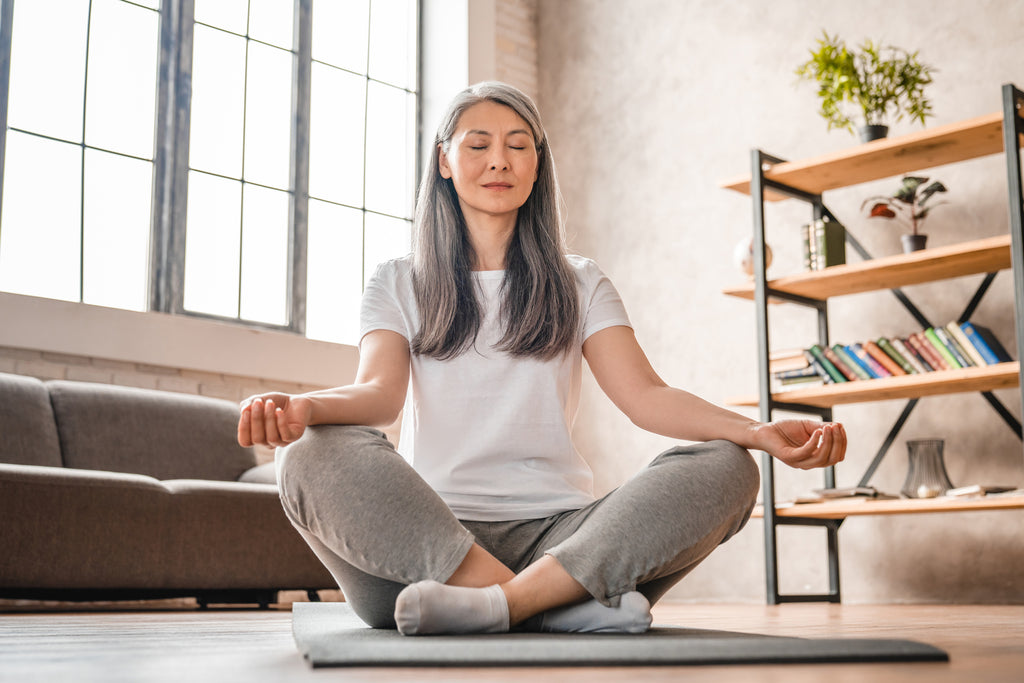
Watch Out for Harmful Ingredients
If you want to reduce or prevent crepey skin, you need to start reading the labels on your beauty products! At the risk of sounding like a worn record, chemicals like those found in some beauty products cause free radical damage, leading to wrinkled, crepey skin as well as more serious conditions like skin cancer.
But, it's not just the labels of the products you put on your face that you should be reading. Be sure to also check your hair products, body scrubs, moisturizers, make up, cleansers, and soaps.
The best way to avoid crepey skin is to implement a skin care regime that is free of harmful substances.
Transform Crepey, Sensitive Skin Into a Full & Youthful Complexion With Taut
Are you ready to take your skin from zero to hero in just 21 days? We've got just the program for you! Designed to help prevent crepey skin, our Ultimate Transformation Program combines our three most plumping and hydrating ingredients to reduce the signs of skin aging.
Providing you with a 21-day supply of our Advanced Liquid Collagen Formula, our Taut Collagen Masks, and our Taut Hydrate, you'll see an improvement in skin texture and tone in just three weeks.
Packed with skin-loving ingredients, our liquid collagen formula tastes delicious and is easy to incorporate into your beauty routine. And, with Taut Hydrate, all you have to do is take one capsule a day to really reap the rewards of this moisture magnet.
We've included a pack of five of our Collagen Masks to target the skin from every angle. Designed to infuse peptides directly into your dermis, our mask also offers a healthy dose of vitamin C and botanical squalene to brighten your complexion.
Don't want to miss out on your favorite products? Sign up for a skin care subscription box and you'll have your items delivered to your front door every month!




